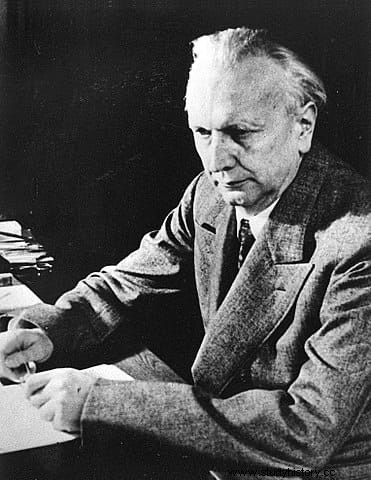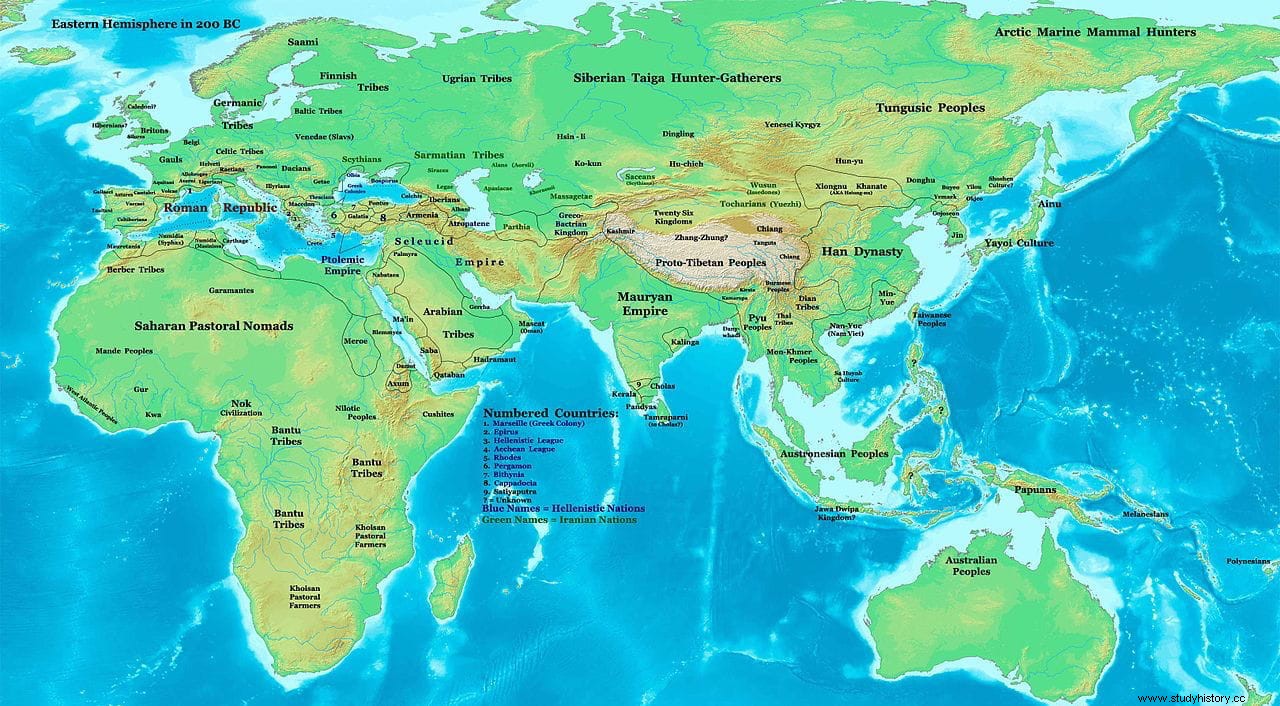In chronology, the term was sure sounds familiar to everyone. . It is a time computation formula that meets various criteria and is applied in both history and geology, being able to constitute independent systems. Thus, we speak of the Primary Era (or Secondary , Tertiary and Quaternary ) when we speak of prehistory, just as we do more generally of the atomic age if we refer to the period of discovery of nuclear energy in the second half of the 20th century, of the space age if we look at Man's effort to leave the stratosphere , etc. But why have you never heard the expression Axial Era? ? Let's see what it is.
It is a term coined in 1949 by Karl Jaspers, the famous German philosopher, in his book Vom Ursprung und Ziel der Geschichte (Origin and goal of History). Jaspers, who was a psychiatrist by training, had often treated empiricism as a scientific method in his works and introduced the concept of transcendence, that which exists beyond space-time reality and, therefore, alien to the objectivity of the human thought. This, human thought, would have hatched at a specific moment in Antiquity that, moreover, occurred simultaneously and separately in several different corners of the planet:the classical Mediterranean world, China, Persia and India. And he called that very special period the Axial Era .

That is, between the 8th and 3rd centuries B.C. -approximately- generations of philosophers and thinkers succeeded one another in places very distant from each other, without contact between them, as other 18th and 19th century authors had already pointed out. One of them, the Scottish lawyer and folklorist John Stuart Stuart-Glennie, even defined that fact in 1873 as a moral revolution that fixed the spiritual foundations of Humanity but transcended the merely religious (Jaspers, in fact, had quite an influence on theology although he rejected being linked to a specific faith).
However, the Axial Age it would be characterized by its liminality, an anthropological expression used by the French ethnographer Arnold Van Gennep in his work Les rites de passage (The rites of passage) to describe the stage prior to an initiation rite and that implies being halfway through a process. In this case, it would be the change of vision of the world by abandoning the old certainties but not yet reaching the new ones. This was possible thanks to a series of wise men who, in their countries or areas of influence, traveled explaining their ideas, debated with each other and attracted disciples who continued their line of thought. Those places, the ones mentioned above, experienced a similar political, social and economic context at the same time, which is why the circumstances were favorable:opposing city-states, the invention of currency, the emergence of markets...

It was when the Jewish prophets emerged in Levante, such as Elijah, Isaiah, Jeremiah or Ezekiel. Also the Greek philosophers with their schools:pre-Socratics like Parmenides or Heraclitus; sophists like Socrates; and others like Plato, Aristotle, Archimedes, etc. Jaspers also cites Homer. In Persia, Zoroastrianism (from Zoroaster) was born and in China, after the Spring and Autumn periods and the Warring States period, Taoism and Confucianism clashed with the so-called Hundred Schools of Thought . Finally, in India and its surroundings, Hinduism (the Vedic Upanishads), Buddhism (Siddartha Gautama) and Jainism (Parshvanatha and Mahavira), among others, developed.
They all had elements in common such as the awareness of Man and his limitations, the criticism of established customs and opinions, proselytism, the debate of ideas and the chaos resulting from that doctrinal clash, from which the subsequent currents of thought arose, many of which have reached the present. A good example of this are Platonism and Neoplatonism, with their influence on medieval and modern philosophy, from which Christianity drinks. In fact, in his works Meno , Phaedon and Phaedrus , Plato himself called anamnesis to the recovery of an innate knowledge that Man would have and the learning process would consist precisely in rediscovering it. Likewise, the other great religions were born in that period.

The concept of Axial Era it settled among numerous thinkers from various fields, who accepted it and treated it in their respective disciplines. This is the case, for example, of the philosopher Eric Voegelin and his book Order and history .In search of order (Order and history. In search of order), in which he speaks of the "great leap of being." Or anthropologist David Graeber with Debt. The first 5,000 years (In Debt. An Alternative History of Economics). Or the historian Karen Armstrong, who in her The great transformation. The beginning of our religious traditions (The great transformation. The beginning of our religious traditions) adds a Second Axial Age , that of Newton, Freud and Einstein).
Now, there has been no lack of criticism or, at least, nuances about the dates proposed by Jaspers and he himself admitted that when he made the first formulation it was only an approach that should be developed in more detail. The expert in Zoroastrianism Mary Boyle doubted that this current was adjusted to the time described and the historian Diarmaid MacCulloch, specialized in Christianity, considers it erroneous by including civilizations that are too different from each other. Sociologists Stephen Sanderson and Mark D. Whitaker and biblical scholar Iain William Provan are other critics.
